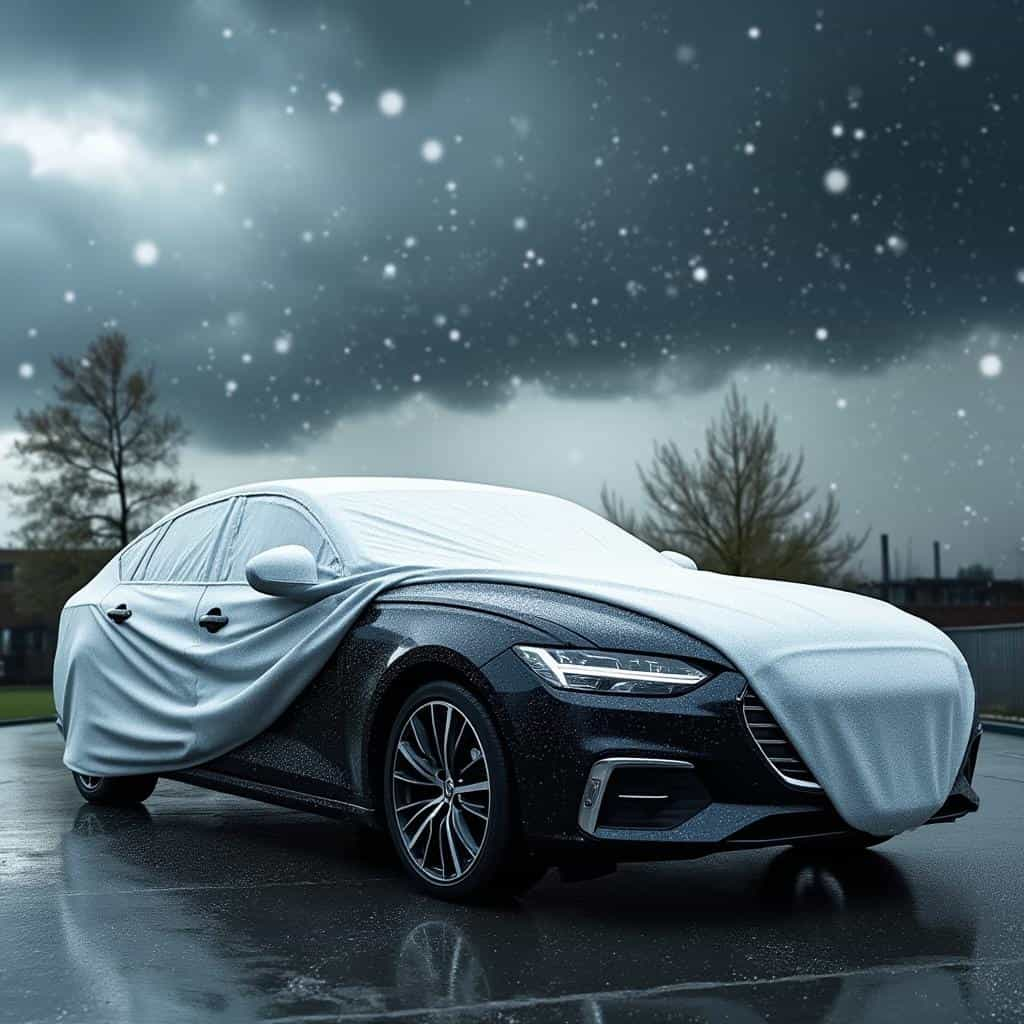In recent years, the automotive accessory market has seen a significant rise in the demand for anti-hail car covers. Hail, once considered a seasonal nuisance, has become a pressing concern for car owners due to the increasing unpredictability of weather patterns globally. As climate change exacerbates extreme weather events, protecting vehicles from hail damage is no longer optional but necessary.
Anti-hail car covers emerged as an innovative solution designed to shield vehicles against the destructive impact of hail. Traditionally, car covers served as basic protective layers against dust and UV radiation. However, the technological advancements incorporated into anti-hail variants have revolutionized vehicle protection. These covers offer a unique blend of durability and functionality, crafted from materials specifically engineered to withstand the harsh blows of hailstones.
The core material used in high-quality anti-hail car covers is typically a type of multi-layered polyethylene or polyester. These materials are known for their robustness, flexibility, and lightweight properties, making them ideal for frequent use and storage. Some manufacturers enhance this fabric with additional layers, including thermoplastic polyurethane (TPU) or ethylene vinyl acetate (EVA) to increase impact resistance. These added layers are pivotal in absorbing and dispersing the kinetic energy of falling hailstones, preventing them from leaving dents or scratches on a car’s surface.
Each anti-hail cover is meticulously designed to offer not only protection but also ease of use. Features such as elastic hems, adjustable straps, and reinforced grommets ensure the cover can fit snugly over a variety of car shapes and sizes, from compact cars to SUVs. Moreover, many brands are now introducing automatic, inflatable designs that deploy at the touch of a button, effortlessly enveloping the vehicle to guard against imminent hail storms.
The functionality of these covers extends beyond just protection from hail. They also guard against rain, snow, and even mild impacts from falling branches, making them a versatile addition to any vehicle owner’s arsenal. This versatility explains their rising popularity in regions prone to extreme weather events, notably in the Midwestern United States, parts of Canada, and Central Europe.
The cost of anti-hail car covers can vary significantly based on the brand, size, and technological features. On average, a standard anti-hail car cover retails between $150 to $500. This pricing reflects the sophisticated materials and engineering involved in the production. For inflatable models or those with additional smart technology integrations, prices can soar to $800 or more. Despite the initial investment, car owners recognize the long-term savings by mitigating potential repair costs and preserving the vehicle’s resale value.
Geographic trends in sales highlight clear patterns correlated with weather conditions. In the United States, sales are notably higher in states such as Colorado, Nebraska, and Kansas, where hail storms are frequent. European markets, particularly in Germany and Italy, also report increased sales, driven by a combination of frequent hail incidents and a consumer base focused on vehicle maintenance. In contrast, sales are relatively low in regions with a tropical climate, where hail storms are rare but increasing with global climate anomalies.
The automotive industry acknowledges the growing demand for these protective covers, spurring further innovation. A major influence comes from sustainable practices, where manufacturers are experimenting with eco-friendly materials that offer the same strength and resilience. Some industry leaders predict a future where covers integrate solar panels and sensors that monitor weather conditions, automatically deploying the cover as needed.
Expert opinion points towards a continued rise in the adoption of anti-hail car covers. Automotive analyst Mark Shepherd notes, ‘As weather becomes increasingly erratic, the market for protective car accessories will only expand. Car owners are looking for smart, sustainable solutions, and anti-hail covers fit into this trend.’ By investing in these covers, consumers are adapting to the changing climate landscape while extending the lifespan of their vehicles.
In conclusion, anti-hail car covers represent a vital innovation in automotive care, reflecting broader environmental shifts and advancing material sciences. As technology improves and consumer awareness grows, these covers will likely become a standard accessory for car ownership, reflecting the intersection of protection and progress. Industry stakeholders remain optimistic, foreseeing a future where every car owner, regardless of geographic location, views anti-hail covers as indispensable.
You may also like
The Best Pressure Washers of 2025
As 2025 unfolds, the market for pressure washers has seen significant innovation, catering to both residential and commercial needs. This article dives into the top pressure washers of the year, examining their technical features, advantages, and potential drawbacks, while highlighting the latest industry trends and consumer expectations.
Electric Citrus Juicers 2025
Electric citrus juicers have revolutionized the way we consume fresh juices at home. As we look towards 2025, several innovative models have emerged, each with unique features and capabilities. This article explores the technical characteristics, pros, and cons of various juicers, offering insights into pricing and warranties.
Charm and Functionality of the Best Vintage Refrigerators
Vintage refrigerators bring a nostalgic charm while offering modern functionality. This article delves into the most sought-after vintage-style refrigerators available today, exploring their technical features, advantages, disadvantages, costs, and warranty options.
The Best OLED Smart TVs of 2025
In the world of OLED Smart TVs, 2025 brings forth an impressive lineup. This article delves deep into the various models available in the market, discussing their advantages, features, drawbacks, pricing, and warranty options.
